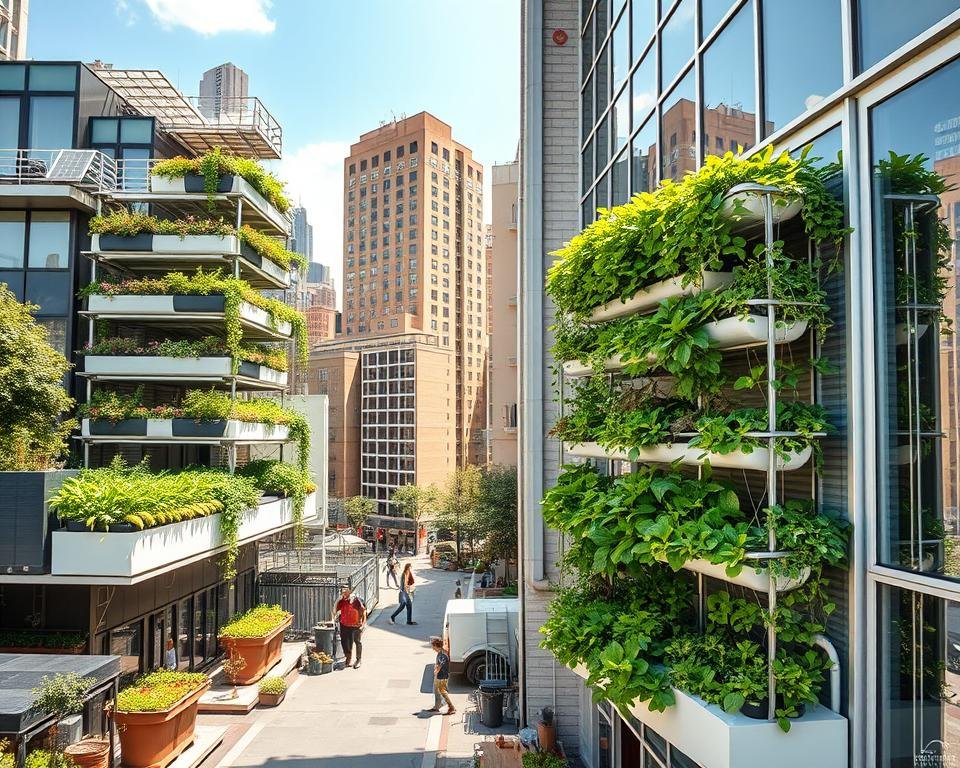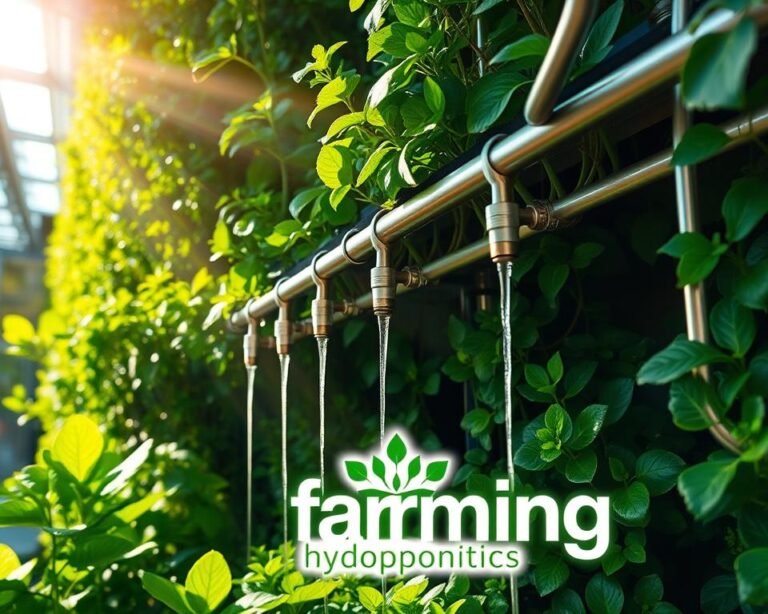Urban Hydroponics for Food Security: A Powerful Solution for Cities
Imagine walking into your kitchen and picking fresh, crisp lettuce from a vertical garden hanging on your wall. This isn’t a scene from a futuristic movie, but a real possibility with urban hydroponics for food security. As cities grow and available farmland shrinks, sustainable urban farming offers a revolutionary approach to feeding urban populations.
The challenges of traditional agriculture are becoming increasingly clear. With 14% of Americans living in food deserts and urban populations expanding rapidly, we need innovative solutions. Urban agriculture provides a lifeline, transforming how we think about food production in densely populated areas.
Urban hydroponics isn’t just a trendy concept—it’s a critical strategy for addressing food security challenges. By growing plants without soil, using nutrient-rich water solutions, these systems can produce up to 10 times more food per square foot compared to traditional farming. The technology allows you to grow fresh produce virtually anywhere: rooftops, indoor spaces, and even vertical walls.
Key Takeaways
- Urban hydroponics can produce fresh food in limited urban spaces
- These systems use up to 90% less water than traditional farming
- Vertical growing maximizes food production in dense urban environments
- Hydroponics reduces carbon footprint from long-distance food transportation
- Community engagement increases through local food production
Understanding Urban Hydroponics for Food Security
Urban agriculture is changing how cities grow food. Hydroponic solutions for food shortages are making sustainable farming possible in small urban spaces.
With the world’s population set to hit 9.7 billion by 2050, new farming methods are key. Hydroponics is a big change, letting crops grow in water instead of soil.
What Makes Hydroponics Unique
Hydroponics is a big shift from old farming ways. It lets plants grow in water, not soil. This method has big benefits:
- Uses up to 90% less water than traditional farming
- Can grow ten times more food per acre
- Can grow food in places that were hard to farm before
Key Components of Hydroponic Systems
Urban indoor farming needs a few key parts:
- Nutrient solutions that feed plant roots
- Grow lights for plants to grow well
- Systems to move water around
Types of Urban Hydroponic Setups
Cities like New York, Tokyo, and Singapore are trying different hydroponic ways:
- Vertical farming systems
- Nutrient Film Technique (NFT)
- Deep Water Culture (DWC)
Urban hydroponics isn’t just about growing food—it’s about creating resilient, sustainable food systems for future generations.
By using these new methods, cities can fight food shortages. They can also cut down on emissions from food transport. Plus, they can create jobs in green farming.
Environmental and Resource Benefits of Urban Hydroponics

Urban hydroponics is a new way to grow food that’s good for the planet. Cities face big challenges in getting enough food, but hydroponic technology offers a solution. It helps farms stay strong even when the weather is tough.
Urban hydroponics is great for the environment. It uses much less water than old farming ways. This is perfect for cities where water is scarce.
“Hydroponics transforms urban spaces into productive agricultural zones, reimagining how cities can feed themselves.”
- Reduces water consumption dramatically
- Enables year-round food production
- Minimizes urban heat island effects
- Improves local air quality
Your city can become a place where food grows easily. With hydroponics, you can grow food even in small spaces. This includes balconies or big, empty buildings.
| Resource | Traditional Farming | Hydroponic Farming |
|---|---|---|
| Water Usage | High consumption | 90% less water |
| Land Requirements | Extensive acreage | Minimal space needed |
| Crop Production | Seasonal | Year-round |
By using urban hydroponics, you’re doing more than just growing food. You’re making your city a better place. This helps solve big problems like not having enough food and taking care of the environment.
Space-Efficient Solutions for Urban Food Production
Urban areas face big challenges in growing food because of limited space. Vertical gardening is a game-changer, changing how cities grow food. It lets you grow food without being limited by square footage, thanks to new ways of growing food indoors.

Innovative urban food systems are changing how we grow food in cities. Cities can now grow more food by using technology and creative designs.
Vertical Growing Systems and Space Optimization
Vertical gardening saves a lot of space in cities. Hydroponic systems can stack high, letting you:
- Grow up to 10 times more produce per square foot
- Use wall spaces, rooftops, and indoor areas
- Create self-sustaining food production units
Integration with Urban Infrastructure
Your city can turn unused spaces into farms. Urban food hubs show how new infrastructure can help local food. You can use:
- Repurposed warehouse spaces
- Rooftop garden installations
- Underground cultivation facilities
Maximizing Yield in Limited Spaces
Controlled environment agriculture lets you grow a lot of food in small spaces. Hydroponic systems use up to 90% less water and let you grow food all year. The future of urban agriculture is in growing food in small city spaces.
Hydroponics turns urban areas from food deserts into green farms.
Sustainable Water Management and Resource Conservation

Urban hydroponics is a new way to grow food that saves water. It shows how we can use less water to grow food than old farming ways.
Water management is key in hydroponics for solving food shortages. These systems use up to 90% less water than traditional farming. This makes them very important for places where water is scarce.
“Hydroponics isn’t just farming; it’s a water conservation strategy for the future.” – Urban Agriculture Expert
- Closed-loop water recycling systems
- Minimal water loss through evaporation
- Direct nutrient delivery to plant roots
- Reduced agricultural water waste
Hydroponics is very good at saving water. Old farming uses a lot of water, but hydroponics can grow more food with much less water.
| Farming Method | Water Usage | Crop Yield Potential |
|---|---|---|
| Traditional Agriculture | High Water Consumption | Standard Yields |
| Urban Hydroponics | 90% Less Water | 20-25% Higher Outputs |
By choosing hydroponics, you help the planet. These systems save water, use fewer pesticides, and help grow food in cities.
Conclusion
Urban hydroponics is changing how we think about food in cities. With 13.8 million U.S. households struggling to get food in 2020, it’s a big help. It makes growing food in cities better and makes communities stronger.
You can help a lot by supporting urban farming. Hydroponics lets us grow food in small spaces, using way less water than old farming ways. This helps make food available and cuts down on pollution from moving food around.
The future of growing food in cities is looking good. With people working together on hydroponics, we can fight hunger, teach others, and help local businesses. As cities grow, hydroponics is a key part of making food systems better for everyone and the planet.
Your help is important. You can support local farming, try hydroponics at home, or push for better farming laws. Together, we can make cities better places for food and the environment.







